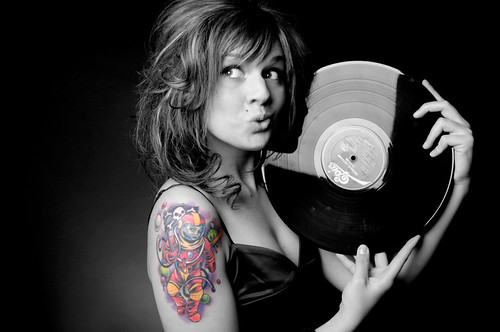 At one point, when people saw a tattoo on a stranger, it made them apprehensive. In today's society, tattoos have become much more mainstream, and chances are you know someone who has a tattoo. Or perhaps, you are interested in getting one yourself. How do you know if a tattoo artist is following proper safety procedures to ensure you do not get an infection from the tattooing process?
At one point, when people saw a tattoo on a stranger, it made them apprehensive. In today's society, tattoos have become much more mainstream, and chances are you know someone who has a tattoo. Or perhaps, you are interested in getting one yourself. How do you know if a tattoo artist is following proper safety procedures to ensure you do not get an infection from the tattooing process?
 First of all, if you walk into a tattoo studio and it does not look and smell clean, chances are it isn't. Walk right back out of the shop immediately. Every tattoo artist should start out with sterile supplies and surfaces. Surfaces should be cleaned and sanitized before and after EVERY procedure. Last, but not least, the client's skin should also be kept clean to prevent infection, and in rare cases where it is required, the artist should be protected from transmittable diseases.
First of all, if you walk into a tattoo studio and it does not look and smell clean, chances are it isn't. Walk right back out of the shop immediately. Every tattoo artist should start out with sterile supplies and surfaces. Surfaces should be cleaned and sanitized before and after EVERY procedure. Last, but not least, the client's skin should also be kept clean to prevent infection, and in rare cases where it is required, the artist should be protected from transmittable diseases.
Here is a list of procedures that your artist should follow to ensure the sanitation and safety of their clients.
 1) Use an autoclave to sterilize all reusable equipment. Once the instruments come out of the autoclave, they should be properly sealed in an autoclave bag, which is opened in front of the client before use.
1) Use an autoclave to sterilize all reusable equipment. Once the instruments come out of the autoclave, they should be properly sealed in an autoclave bag, which is opened in front of the client before use.
2) The artist should scrub up. This will include using an antibacterial skin cleanser and using proper medical scrubbing such as scrubbing to the elbows for several minutes. They should use disposable towels to dry off and also shut off the running water so their skin does not touch the faucet. They should then put on rubber gloves.
3) The work area should be full cleaned and sanitized. This normally consists of using a heavy medical germicide that kills all types of germs. These are usually antibacterial, antifungal and antiviral and are quite potent so they should be used with care. Work areas should include all surfaces such as counters, trays, tables, power sources, ink trays (if they are not autoclaveable) and all cords or cables.
 4) The artist should now be setting up their tattoo equipment. This should include placing plastic covers over the sanitized cords, as well as a cover over the tattoo machine to prevent cross contamination of any sort. Set up will also include the set up of ink supplies.
4) The artist should now be setting up their tattoo equipment. This should include placing plastic covers over the sanitized cords, as well as a cover over the tattoo machine to prevent cross contamination of any sort. Set up will also include the set up of ink supplies.
5) Lastly, before ink touches skin, the skin should be properly sanitized. This will include wiping down the skin with a variety of mediums depending on the artists choice. This can range from rubbing alcohol to green soap to a specialized antibacterial cleanser.
Every tattoo artist should adhere to this basic sanitization list. Every artist is different; however, every artist should have safety and cleanliness in mind. As you can see keeping sanitary conditions in tattooing is painstaking work, but it is well worth the effort when you consider the safety of everyone involved.












No comments:
Post a Comment